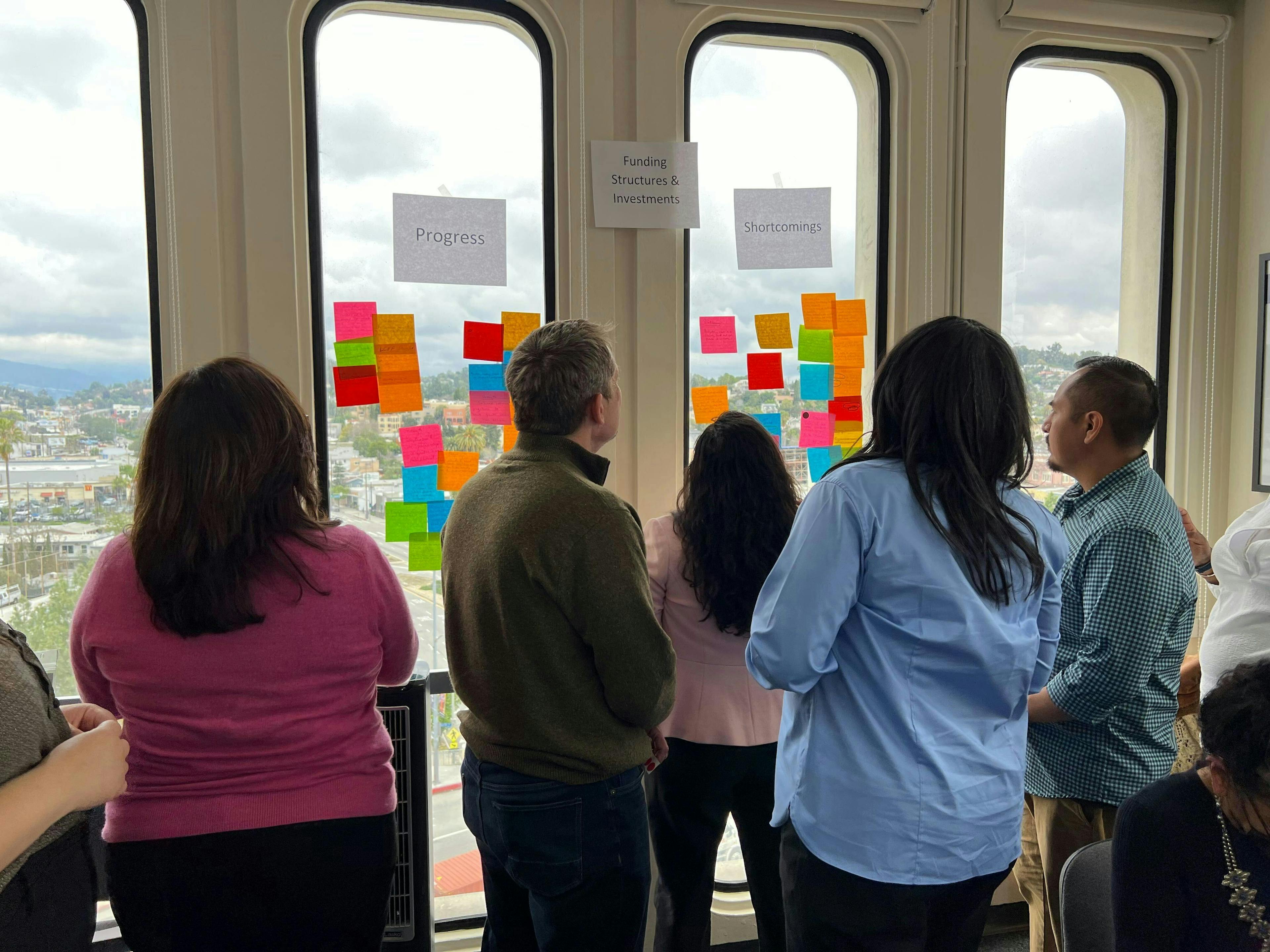Looking Back: A Reflection on the Progress and Shortcomings of LCFF

By Malika Pandey, Educational Equity Intern
Contributors: Jessenia Reyes, Associate Director of K-12 Policy and Day Son, Senior Manager of Educational Equity
For over 15 years, Catalyst California’s Educational Equity program has convened statewide conferences through the Birth to Twelfth Grade Water Cooler Network. Recently, our team has begun exploring innovative ways to respond to the needs of the field. This desire led us to expand our approach to include “table talks” – a working-style meeting with a smaller group of education leaders to engage their expertise in one key topic to explore together. Our first Water Cooler convening of this kind took place in March 2023, centering on the Local Control Funding Formula (LCFF) policy: “A 10-Year Milestone: Deepening Racial Equity in LCFF.” This three-part blog series will share key themes and takeaways from the conversation.
For this half-day discussion, we brought together a cross-section of leaders that have been deeply engaged in the implementation of LCFF and its’ impact on students from low-income families, foster youth, and English learners. We also intentionally partnered with Black education leaders, parents, and Black-led grassroots organizations as these voices are particularly critical to informing how California can advance racial equity more effectively for our Black students. The following focuses on part one of three of the Water Cooler discussion—Looking Back: A Reflection on the Progress and Shortcomings of LCFF.
Education leaders uplifted that LCFF transformed the school funding landscape in California, resulting in important equity and achievement gains. Redistributing funding to districts based on concentration of targeted students held districts accountable for meeting their needs, which led to improved outcomes for some targeted student groups on achievement, graduation rate, college readiness, and other indicators. Through Local Control and Accountability Plans (LCAPs), LCFF institutionalized a structure to actively engage the community, design supports to best meet community needs, and provide transparency to allow families to better understand school funding.
Despite this progress, implementation of this policy has illuminated some shortcomings. Leaders in the space highlighted that the policy does not require school-site level transparency to show how funds are spent, which can result in LCFF funds being used to fill budget holes and pay for punitive measures like law enforcement in schools. Furthermore, leaders called attention to the lack of sufficient oversight from the California Department of Education and County Offices of Education regarding the equitable spending obligations, meaning there are few measures ensuring that districts are investing in targeted student supports and authentic community engagement strategies within the LCAP process. Additionally, there is a lack of transparency that makes it unclear which investments and interventions are most beneficial, making it more difficult for low-performing districts to effectively direct funds.
Water Cooler participants highlighted that although LCFF institutionalized community input in its implementation, there is also inadequate oversight on districts that fail to incorporate community recommendations and consistency in local-level community engagement. This has resulted in a lack of community understanding of the LCFF policy and insufficient shared decision-making with students and families, particularly Black, Indigenous, and people of color (BIPOC) communities or multilingual communities that need information in their home language. Furthermore, the group discussed that despite the data that shows Black students need great support (as the lowest performing student group), due to Proposition 209, the LCFF does not identify Black students as a high need group. Thus, it fails to target services for the students who need it most.
In sum, the LCFF policy has taken important steps to distribute public education dollars more equitably at the district level and has created space for family and community voice. And yet, there are several challenges that need to be addressed to realize the full potential of LCFF. It is critical to refine and build upon the LCFF policies, structures, and accountability systems to better reach our diverse, multilingual students experiencing greater need at the local level to advance racial and economic equity in California and support our students to thrive.
Stay tuned for the next post in this series, which will discuss important equity accountability proposals.
Catalyst California would like to thank the following partners who helped shape and lead our Water Cooler conversation.